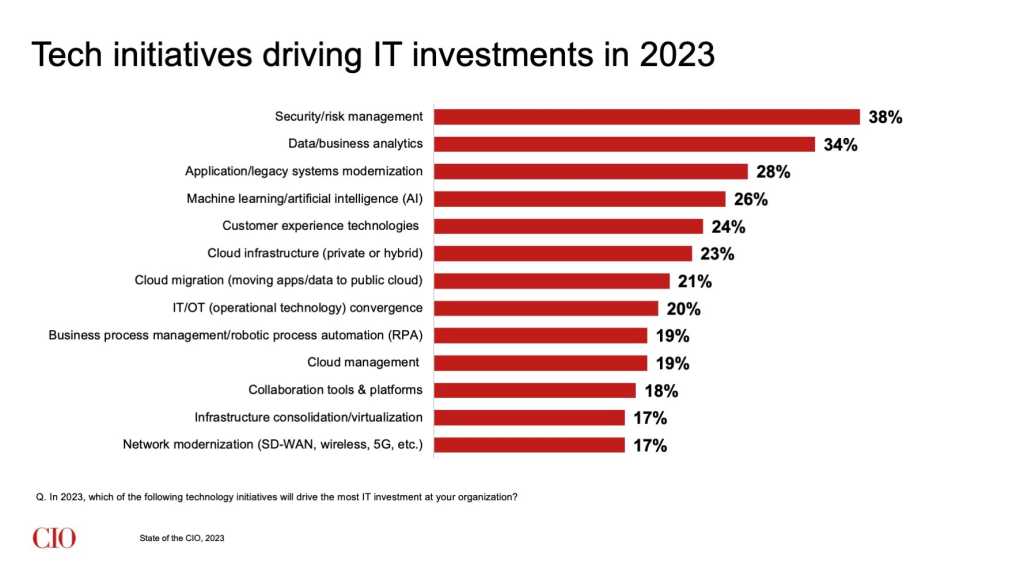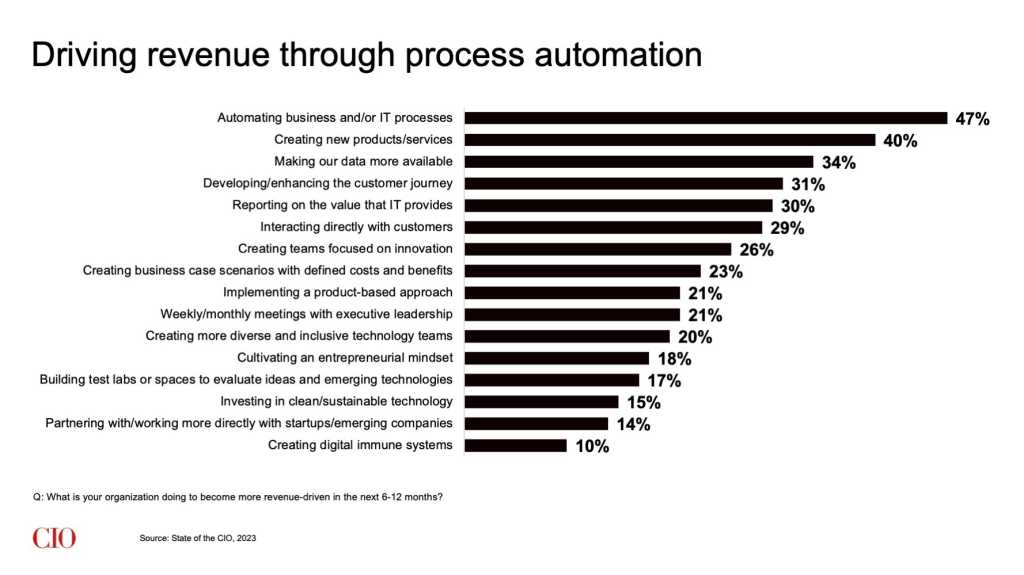- My favorite 3-in-1 travel MagSafe charger is smaller than a cookie (and it's $20 off)
- Workday unveils new AI tools and agents for developers - here's how to access
- Enterprises face data center power design challenges
- #Infosec2025: Channel Bridges Security Skills Gap
- Need to relax? These sound apps do the trick for me - here's how
State of the CIO, 2023: Building business strategy

At insurance company The Hartford, the technology initiatives and business strategies that are on tap for 2023 are one and the same, according to Deepa Soni, the company’s CIO. Cloud deployment, AI, analytics, a modern data ecosystem, and digitization of more business processes are at the top of the agenda to simplify interactions for customers, brokers, and agents and to bring the power of digital tools to employees. For example, underwriters used to toggle between nearly a dozen tools to get their job done — today they use one streamlined tool with all relevant information at their fingertips to make better decisions while understanding risks, Soni says.
Deepa Soni, CIO, The Hartford
The Hartford
With new technologies poised to reinvent business processes and disrupt entire markets, Soni says she and her CIO counterparts must play a pivotal role guiding the business to think about things differently while recognizing opportunities to harness technology to create solutions for business partners, customers, and employees. One of the more significant changes at The Hartford has been to embrace agile practices, not just in the IT domain, but as a companywide business practice. “We’re now organized around customer-centric value streams that start with the product owners in the business and extend into technology,” she explains. “The opportunity to leverage data and technology is increasing so we have to deliver capabilities faster to be able to better capitalize on future opportunities.”
Leveraging data, advanced analytics, and AI is top priority across the board. Thirty-four percent of IT leaders responding to the 2023 State of the CIO survey called out data/business analytics as a major tech initiative driving IT investments, second only to security and risk management (38%). Machine learning and AI were also high on the list, cited by 26%.

Foundry / CIO.com
With data and analytics a critical engine for driving business strategy, Dow Inc. combined its data and analytics teams into one group last year, elevating a new dedicated leadership role. Chris Bruman, Dow’s first chief data and analytics officer, reports directly into Melanie Kalmar, a corporate vice president and Dow’s CIO and chief digital officer.

Chris Bruman, chief data and analytics officer, Dow
Dow
In his dual role, Bruman leads a centralized data and analytics team, but also has accountability for building a data and analytics strategy for the entire enterprise, to both enable growth and empower productivity. On his watch, Dow has updated its data operating model to a hub and spoke approach, is setting up a data platform and data catalog that can support the entire enterprise, and expanded the data initiative to harness both structured and unstructured data. Bruman’s group has also invested time and resources in data literacy, launching a companywide program to upskill the enterprise in the language of data and how to take advantage of data and analytics.
“Because analytics are so much more important in how we do work every day, we don’t believe a fully centralized team can keep up with the demand,” he explains. With the federated or hub and spoke approach, the power of leveraging analytics rests in the business functions. “It’s about data democratization and empowering the spokes to do more on their own,” he says.
The CIO-plus role takes shape
In addition to the focus on data, Dow has also invested considerably over the past few years to put digital platforms in place, including those aimed at improving and speeding up the pace of innovation and delivering a better digital buying experience on Dow.com while expanding direct connections with customers. Dow is also working to digitize its manufacturing sites, channeling data to the field where it’s needed to drive decisions and improve operational efficiency, operating discipline, safety, and reliability, according to CIO and CDO Kalmar. “Digital at Dow represents a company strategy, not just an IT strategy,” she says.

Melanie Kalmar, CVP, CIO, and chief digital officer, Dow
Dow
Other CIOs, like Kalmar, are expanding their roles and oversight responsibilities beyond IT as digital strategies move front and center in the business. Many are taking on new revenue responsibilities — a move cited by 68% of IT leaders this year, up from 65% in the 2022 State of the CIO survey. As part of the move, 44% of IT leaders are managing a team tasked with new revenue-generating capabilities, while a quarter are members of such a team, the research found. As part of this expanded revenue charter, IT leaders are automating business and IT processes (47%), creating new products and services (40%), and making data more available (34%).

Foundry / CIO.com
Andrew Ho of Global Strategy Group (GSG) now has ownership of both the IT and offices services organizations — a move precipitated by the synergies between the two areas. With hybrid work now a mainstay, Ho’s dual role ensures he has accountability for evolving employee experience and engagement from working both remotely and in-office. For example, when reconfiguring office space to accommodate hybrid work, it’s impossible to separate technology requirements from construction given the need for immersive audio-visual tools, Zoom rooms, and hoteling capabilities, says Ho, senior vice president and head of technology and office services for GSG, a research, communications, and public affairs agency.

Andrew Ho, SVP and head of technology and office services, Global Strategy Group
Global Strategy Group
In addition, Ho says the office services staff is also best positioned to handle the front-end technical support for the firm given they are always in office and maintain a certain relationship with employees. “The lines have blurred with what is facilities versus what is technology, and all of that falls under IT,” he says.

Foundry / CIO.com
Sastry Durvasula, who holds both the CIO and client service officer titles, came into TIAA a year ago in part for the CIO-plus opportunity. From a technology perspective, Durvasula’s 2023 roadmap balances transformation through a digital-first agenda built around data and AI for hyper-personalized experiences while at the same time, modernizing the core platforms and processes by harnessing automation and orchestrating hybrid, multicloud migration.
On the Client Services front, Durvasula’s focus is also on AI and automation to transform the way TIAA does everything from front-office client engagement to fraud management and client support services. “Our fundamental belief is that Client Services would have a significant benefit to have proximity to technology as they would be the biggest beneficiary when it comes to AI, automation, and the digital services we are investing in,” Durvasula explains. “It makes a lot of sense to bring them together.”

Sastry Durvasula, CIO and client service officer, TIAA
TIAA
Durvasula, who’s held CIO-plus roles with oversight of IT and digital products at other companies, firmly believes technology’s front-and-center role in business strategy has changed the game and set IT leaders on a new course. It’s not a matter of switching focus between technology initiatives and business strategy, he says, it’s a balancing act that requires an equal focus on both.
“Now that technology is front and center in business strategy and not a back-end enabler, that changes the CIO role quite a bit,” he says. “Technology is disrupting business in a lot of ways and this is the best time to be on the CIO career path. The branches are wide open.”

